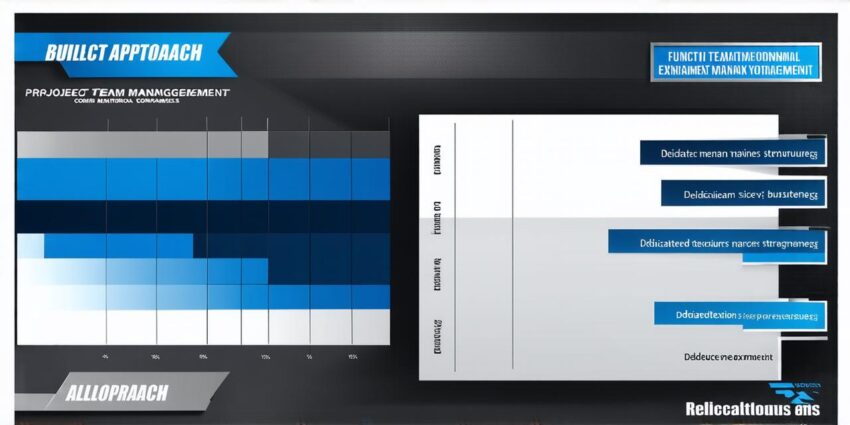Functional Matrix vs Dedicated Team Approach in Project Management: Which One is Right for Your Business?
Introduction
Project management is an essential part of any business operation. It helps organizations plan, execute, and monitor projects to ensure they meet their goals and objectives.
Functional Matrix Approach
The functional matrix approach is a hierarchical structure where projects are managed by a functional manager who reports to a project sponsor or stakeholder. The functional manager oversees the day-to-day operations of the project and works closely with department heads to ensure that the project aligns with the organization’s objectives.
One of the advantages of this approach is that it allows for a clear chain of command, which helps to prevent conflicts and confusion. It also ensures that the project is aligned with the organization’s overall goals and objectives.
However, one of the main drawbacks of the functional matrix approach is that it can be difficult to manage cross-functional teams. Since each department has its own priorities and objectives, there may be conflicts between departments or teams working on different parts of the project. This can lead to delays, budget overruns, and other issues.
Dedicated Team Approach
The dedicated team approach is a collaborative structure where a group of highly skilled individuals work together on a project full-time. The team is usually composed of members from different departments or functional areas who have the necessary skills to complete the project. The team leader reports directly to the project sponsor, and the team works closely with stakeholders to ensure that the project meets its objectives.
One of the main advantages of this approach is that it allows for more flexibility in terms of resource allocation. Since the team members are dedicated to the project, resources can be allocated as needed, without having to worry about conflicting priorities or budget constraints. This can lead to faster completion times and higher-quality work.
However, one of the main drawbacks of the dedicated team approach is that it can be more expensive than other approaches. Since the team members are working full-time on the project, there may be higher labor costs associated with this approach. Additionally, since the team members come from different departments or functional areas, there may be communication and coordination challenges that need to be addressed.
Case Study: Comparing Functional Matrix vs Dedicated Team Approaches
Let’s take a look at a real-life example of how these two approaches can be compared in practice. Suppose a software development company is planning to launch a new product that will revolutionize the industry. The product requires expertise in several areas, including software engineering, user experience design, and marketing.
In the functional matrix approach, the project would be managed by a functional manager who oversees the day-to-day operations of the project. The functional manager would work closely with the department heads to ensure that the project aligns with the organization’s objectives. However, since each department has its own priorities and objectives, there may be conflicts between departments or teams working on different parts of the project. This could lead to delays, budget overruns, and other issues.
In the dedicated team approach, a group of highly skilled individuals from different departments would work together full-time on the project. The team leader would report directly to the project sponsor, and the team would work closely with stakeholders to ensure that the product meets its objectives. Since the team members are working full-time on the project, resources can be allocated as needed, without having to worry about conflicting priorities or budget constraints. This could lead to faster completion times and higher-quality work.

FAQs
1. What is the main difference between functional matrix and dedicated team approaches in project management?
The main difference between these two approaches is how they manage resources and allocate responsibilities. In the functional matrix approach, resources are allocated based on departmental priorities, while in the dedicated team approach, resources are allocated based on the needs of the project.
